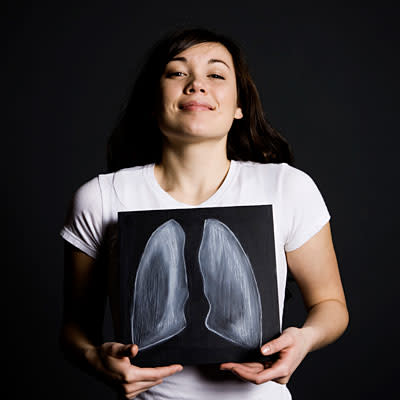The worst jobs for your lungs

By Lisa Zamosky
Nearly 23,000 workers developed job-related lung disease in 2008, the U.S. Department of Labor estimates. More than 16,000 people die from it each year.
But most types of occupational lung disease are preventable, says Philip Harber, MD, professor and chief of the UCLA Occupational and Environmental Medicine Division. "Simple control measures can markedly reduce exposure and the risk," he says.
Health.com: 10 ways to keep air clean at home
Here are some fields that can be risky for your lung health.
Construction
Workers who inhale dust in demolitions or renovations can be at risk for lung cancer, mesothelioma, and asbestosis, a disease that causes scarring and stiffening of lungs.
"We worry about people with exposure 20 to 30 years ago," Dr. Harber says, when many products containing asbestos were not banned.
Wearing protective gear, including a respirator, when working around older buildings and avoiding smoking can help.
Manufacturing
Factory workers can be exposed to dust, chemicals, and gases, placing them at risk for COPD.
In food plants, diacetyl-a flavoring agent used in microwave popcorn, some wines, and fast foods-can cause a devastating and sometimes deadly disease called bronchiolitis obliterans, a close relative of COPD.
The good news? Taking some easy steps can significantly reduce your risk. "Something as simple as when you put diacetyl into a giant pot to mix it, put the lid on and wear a filtering mask," Dr. Harber says.
Health.com: 15 symptoms of COPD
Health care
An estimated 8% to 12% of health-care workers are sensitive to the powder residue found in latex gloves, which can cause a severe asthma-type reaction.
"Even if you're not using [latex gloves], when I put mine on and take them off in the same room, little bits of latex get in the air and people become allergic to it," Dr. Harber says.
Limiting exposure whenever possible can help. But for doctors and nurses, skipping the use of protective gloves is not always an option. In severe cases, Dr. Harber says, a latex allergy can end careers. Some hospitals like Johns Hopkins have switched to latex-free synthetic gloves.
Textiles
Byssinosis, also called brown lung disease, is common among textile workers who make upholstery, towels, socks, bed linens, and clothes.
Workers can inhale particles released from cotton or other materials. "When cotton is ripped apart, it creates huge amounts of dust and can cause significant airflow obstruction," Dr. Harber says.
Smoking increases the risk. Wearing a mask and improving ventilation in the work environment can be beneficial.
Health.com: 8 reasons you can't stop coughing
Bartending
Serving drinks in a smoke-filled room puts bartenders at high risk for lung disease, especially if they are regularly exposed to second-hand smoke over many years.
Today, many states outlaw smoking in restaurants and bars, which has made a significant difference in the health of people working in this field. According to Dr. Harber, studies show that respiratory health among bartenders in cities with smoking bans has dramatically improved.
If you work in a city that still allows smoking in bars, a good ventilation system can help.
Read the rest: Health.com: The worst jobs for your lungs
